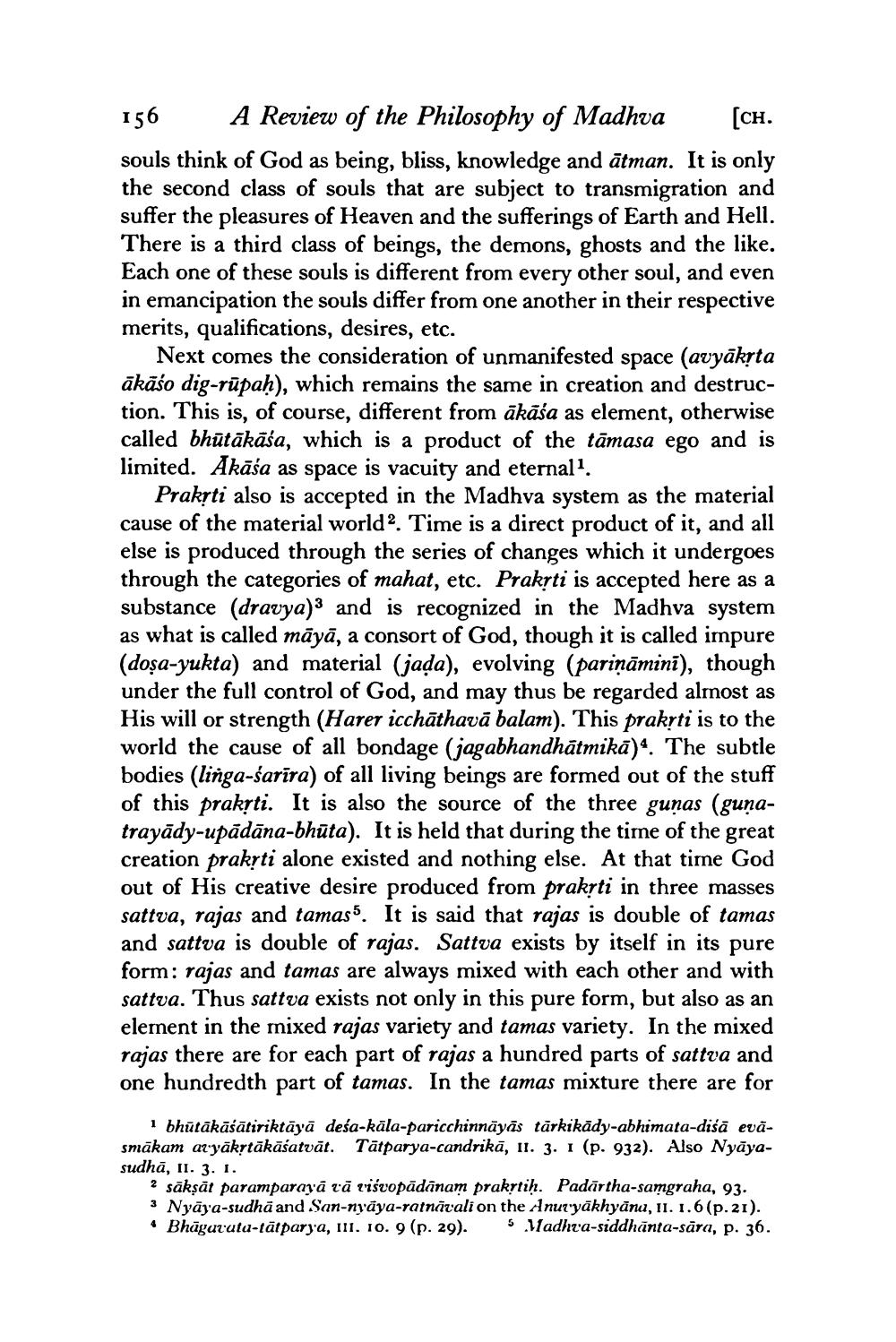________________
156 A Review of the Philosophy of Madhva [CH. souls think of God as being, bliss, knowledge and ātman. It is only the second class of souls that are subject to transmigration and suffer the pleasures of Heaven and the sufferings of Earth and Hell. There is a third class of beings, the demons, ghosts and the like. Each one of these souls is different from every other soul, and even in emancipation the souls differ from one another in their respective merits, qualifications, desires, etc.
Next comes the consideration of unmanifested space (avyākta ākāso dig-rūpaḥ), which remains the same in creation and destruction. This is, of course, different from ākāśa as element, otherwise called bhūtākāša, which is a product of the tāmasa ego and is limited. Akāśa as space is vacuity and et
Prakrti also is accepted in the Madhva system as the material cause of the material world?. Time is a direct product of it, and all else is produced through the series of changes which it undergoes through the categories of mahat, etc. Praksti is accepted here as a substance (dravya) and is recognized in the Madhva sys as what is called māyā, a consort of God, though it is called impure (doşa-yukta) and material (jada), evolving (pariņāmini), though under the full control of God, and may thus be regarded almost as His will or strength (Harer icchāthavā balam). This prakrti is to the world the cause of all bondage (jagabhandhātmikā). The subtle bodies (linga-śarīra) of all living beings are formed out of the stuff of this prakrti. It is also the source of the three gunas (gunatrayādy-upādāna-bhūta). It is held that during the time of the great creation prakrti alone existed and nothing else. At that time God out of His creative desire produced from praksti in three masses sattva, rajas and tamass. It is said that rajas is double of tamas and sattva is double of rajas. Sattva exists by itself in its pure form: rajas and tamas are always mixed with each other and with sattva. Thus sattva exists not only in this pure form, but also as an element in the mixed rajas variety and tamas variety. In the mixed rajas there are for each part of rajas a hundred parts of sattva and one hundredth part of tamas. In the tamas mixture there are for
1 bhūtākāśātiriktāyā deśa-kāla-paricchinnāyās tārkikādy-abhimata-diśā evasmākam az yākstākāśatvāt. Tātparya-candrikā, 11. 3. 1 (p. 932). Also Nyāya
smáká, 11. 3. parampand San. 11. 10.9
2 sākṣāt paramparayā rā risvopādānam praktih. Padārtha-samgraha, 93. 3 Nyāya-sudhā and San-nyāya-ratnārali on the Anuryākhyāna, 11. 1.6 (p.21). • Bhāgurutu-tātparya, II1. 10. 9 (p. 29). 5 Vladhra-siddhānta-sāra, p. 36.




